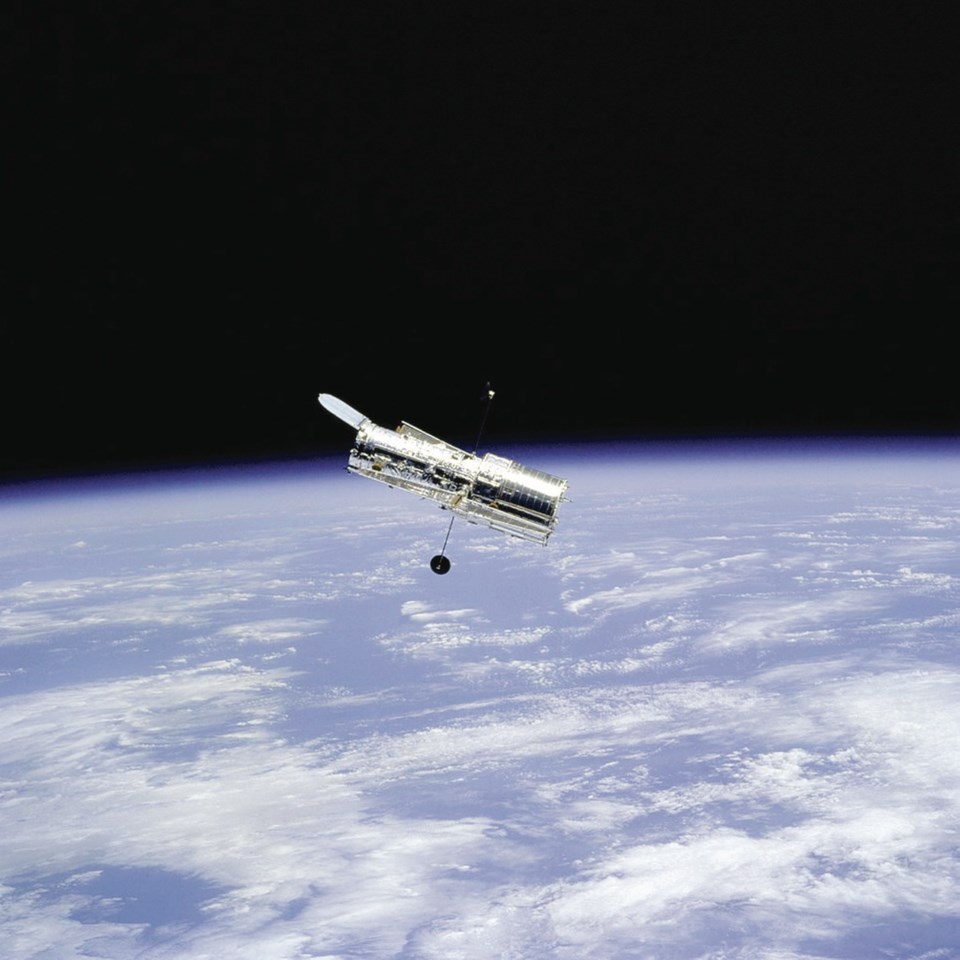Growing up in Alberta in the 1960s, before the Oilers and the Flames and before the rest of the National Hockey League arrived on the scene, Chris Gainor dreamed of going to the stars rather than becoming one.
It was the time of the space race and Apollo missions, of Neil Armstrong and the moon landing and one small step for man.
“Back then, there were a lot of people interested in what the astronauts were up to and I was one of those,” Gainor, 60, says. “I wanted to be an astronaut more than I wanted to play in the NHL.”
The dream faded over the years, but his passion for space never did. It stayed with him through stints as a reporter at the Vancouver Sun, editor at the Medical Post, and communications officer with the Hospital Employees’ Union and later the B.C. NDP government.
Even as he toiled in those jobs, Gainor continued to study astronomy and space exploration on the side. He is currently second vice-president of the Royal Astronomical Society of Canada and a Fellow of the British Interplanetary Society.
In fact, it was while attending a meeting of space enthusiasts in Toronto a number of years ago that he got an idea for his first book.
“Unbeknownst to me beforehand, there was a reunion of all these people who had worked on the Avro Arrow and then subsequently worked for NASA,” he says.
“So I spent a good part of that weekend sitting around listening to these guys.”
His subsequent book, Arrows to the Moon, told the story of Canadian and British aerospace engineers who went to work on the Apollo missions after the Canadian government killed the Avro Arrow.
Gainor went on to write three more books and earn a PhD in the history of technology from the University of Alberta before finally getting that long-awaited call from NASA.
The space agency recently tapped Gainor and a team from Foresight Science and Technology Inc., a global consulting and market research company, to write a book on the post-launch era of the Hubble Space Telescope.
The team, which includes California writer John D. Ruley, will also gather documents and oral histories for a companion online archive available to future researchers.
“The deal is that I have three years to work on it and, at the end of the three years, I’m supposed to give them a publishable manuscript,” Gainor said. “Also, along the way I’ll be doing some articles for popular and academic publications relating to the book.”
It’s a big project, but Gainor’s lifelong fascination with the subject gave him a head start. After he got the contract, he went rooting around in the basement of his Sidney home to see if he had any relevant information. He found a treasure trove of material.
“I’m a bit of a pack rat, and I was amazed how much stuff I found in relation to Hubble — some of which is actually going to help me,” he said.
In addition to a number of books as well as videotape of servicing missions, he has the famous Newsweek magazine from July 1990 shortly after NASA launched Hubble only to discover that it had a defective mirror.
The headline? “Star Crossed: NASA’s $1.5 Billion Dollar Blunder.”
Gainor said the flawed launch nevertheless made for a compelling story “about how people pulled together and figured out a solution to this problem. And the solution wound up working so well that probably a lot of people have forgotten that the mirror was defective.”
Today, Hubble is more beloved than ridiculed, having opened up our understanding of the universe and made astronomy a much more co-operative science, he said.
“When Hubble obtains data and sends it down to Earth, it’s given to whomever the investigator was who proposed it be used in that way. But then, a year later, it becomes public domain, so any scientist can look at that data or anybody in the public.”
So popular has Hubble become that NASA caused a public outcry when it cancelled a fifth servicing mission in 2003 after the Columbia disaster. The backlash — Gainor still has his “Save Hubble” T-shirt — eventually led to the appointment of a new administrator who approved the final servicing mission.
“It’s a robot that has a big presence in popular culture and social media,” said Gainor, who will be heading to Baltimore and Washington to celebrate the 25th anniversary of Hubble’s launch on April 24, 1990.
“There are Hubble tweets and Hubble Facebook and T-shirts and dresses and all sort of Hubble products.”
Gainor hopes his book will be equally accessible to the public, while also serving as a resource for scientists and historians.
“I would hope that scientists and people like that who come along in the future would use this book as a kind of reference, like ‘Why did they do this’ or ‘Why did they do that?’”
Sounding like the old newshound he is, Gainor says: “I think it’s a helluva story.”



